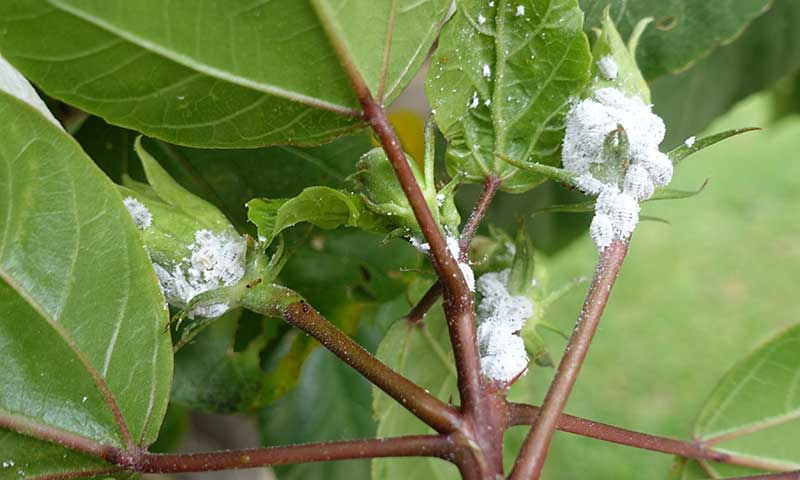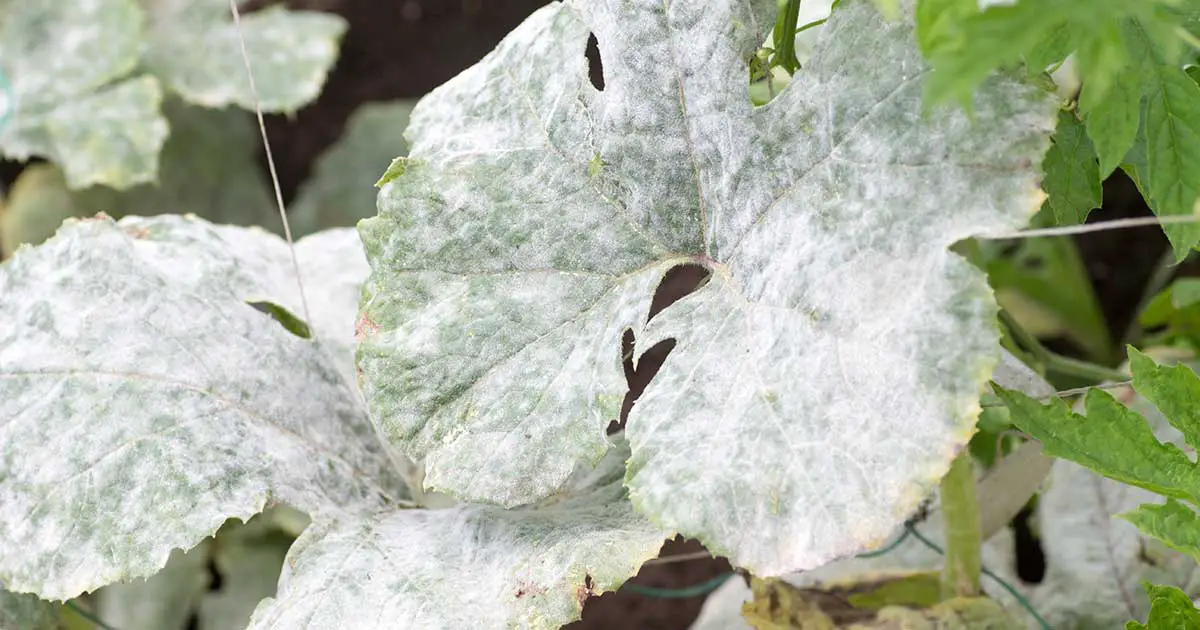Fungal diseases like mildew aren’t harmful and are usually treatable quickly – many even preventable!
Antifungal treatments are accessible and within your kitchen pantry or bathroom cabinets. Vinegar can act as an excellent natural fungicide; use equal parts vinegar and water in a spray bottle and apply directly onto plants that need treating.
Hydrogen Peroxide
Hydrogen peroxide is an affordable and safe plant treatment available in most households, commonly used to kill fungus on plants as well as pests like insects. Furthermore, its usage is both affordable and simple. Hydrogen peroxide can be an effective tool in eliminating fungi on vegetables, fruits, herbs and flowers. It is particularly effective against powdery mildew – which appears as white dust on leaves and stems – found on almost all types of plants from pumpkins to lilacs. Mix 1 part hydrogen peroxide with 9 parts water in a spray bottle and apply to all affected areas of a plant, testing first on small sections first before using all-over spraying for best results. Make sure to test this solution on small spots first to make sure it won’t negatively impact it before applying over large sections of plant life.
Hydrogen Peroxide can also be an effective tool in controlling fungus gnat infestation in your garden. It works by killing the gnats while decreasing soil acidity – both essential elements in avoiding future gnat infestation. You can either spray it onto infected plants directly, or pour it directly onto their soil to alleviate their infestation.
Hydrogen peroxide can also be used to sterilize gardening tools and pots, helping prevent the spread of fungus or diseases throughout your garden. In such instances, however, care must be taken to allow all of the hydrogen peroxide to dry completely before using again.
Hydrogen peroxide can be an invaluable asset when it comes to supporting plant growth. As an aerator, hydrogen peroxide mimics rainwater by providing oxygen and nutrients directly to roots of plants – be that directly onto the ground or mixed with water to make a soil drench solution.
Water can also be used to priming seeds before planting them – known as seed priming – which speeds up their germination rates and protects them against fungal infections or any other organisms that might attempt to invade.
Milk
Milk can be an effective natural fungicide for plants. It works by altering the pH balance of plant leaf surfaces to make them less conducive for mildew spore growth; although researchers still aren’t entirely certain how this happens. Either way, milk works and is often more effective than chemical treatments when dealing with powdery mildew on vegetables like cucumbers, squash and cruciferous crops; simply spray on leaves at a ratio of one part milk to 10 parts water and apply liberally over leaves as necessary.
Mild cases of powdery mildew will usually clear up on its own if conditions are conducive, but severe outbreaks can have devastating results in gardens. Powdery mildew appears as white to grayish spots on leaves that resemble dustings of flour; usually found on upper sides but also throughout plant. Severe infections may spread to affect flowers, buds or any tender new growth that sprouts as part of its pathogen attack.
Powdery mildew thrives in humid conditions and spreads by wind-borne spores, often weakening healthy plants and decreasing yields. While not typically fatal to healthy plants, powdery mildew has proven especially problematic on cucumbers and squash plants as these species are susceptible to multiple varieties of the fungus.
Preventing powdery mildew infections with regular milk treatments on plants is simple and effective, both as preventive measures and on existing diseased leaves. Milk treatments tend to work more effectively on older infections rather than young foliage.
Make sure that you use the appropriate type of milk. Skim or whole milk is recommended, since full-fat varieties contain enzymes that promote fungal growth while their high acidic content may damage plants.
Alongside milk, household items such as mouthwash and vinegar may also help combat fungus. It is best to alternate these home remedies every week in order to prevent resistant fungi from developing resistance and cause infections.

Baking Soda
Baking soda (sodium bicarbonate) has many uses in both the home and garden. It’s cost-effective, non-toxic to mammals, readily available at any grocery store and straightforward to apply – not to mention being an effective natural antifungal agent!
Cornell Formula, an all-natural homemade remedy used to control fungal diseases in plants, is a favored home solution for managing these problems. Containing baking soda as one of its key components, this remedy offers gardeners who wish to forgoing harmful chemicals an option that keeps their gardens looking lush and green.
The Cornell Formula is a simple combination of baking soda, water and vegetable oil that is effective against powdery mildew and black spot in tomatoes and other vegetables, as well as downy mildew, leaf spot and brown rot. Plus, its all-natural, non-toxic and cheap ingredients make it a great alternative to commercial fungicides!
Note that, as with any homemade spray, the Cornell Formula should never be applied directly onto tomato plants during direct sunlight, as this could cause serious burns that kill their leaves. Before applying anything all-over the plant, always test any new mixtures on a small part first to avoid potential disaster.
Home baking soda solutions can be quickly created at home by mixing one teaspoon of baking soda with one teaspoon of liquid soap in one gallon of water and mixing well before pouring the solution into a spray bottle for application to affected leaves. As soon as it touches them, its pH changes will help inhibit fungal growth; repeat application if necessary.
Home remedies such as this one are one of the most widely utilized methods for combatting powdery mildew outbreaks, and should be applied regularly throughout the growing season to ward off an outbreak. They’re especially useful as preventive spraying measures in spring and fall when fungus tends to thrive. Keep in mind, though, that home remedies like this one only act as preventative measures; existing infections must still be addressed with appropriate medications – thus home remedies such as these tend to work best when regularly used over time.
Neem Oil
Neem oil, made from the seeds of Azadirachta indica tree seeds, is a natural plant-based oil with antifungal, insecticidal, and antibacterial properties. Used as an eco-friendly and effective alternative to chemical pesticides such as DDT or organophosphates, it’s used on vegetables, roses and indoor houseplants alike as an organic insecticide and mild insecticide – perfect for disrupting lifecycles of insects while acting as mild insecticide. Neem oil also acts as a fungicide against fungal diseases such as powdery mildew and blackspot.
Neem Oil can be applied both as a spray and soil drench. Sprayed on leaves, it suffocates insects’ breathing holes and kills them off quickly. Furthermore, it may be taken up through some plant roots’ systemic phloem for systemic absorption as an effective insecticide – particularly effective against soft-bodied insect pests like fungus gnat larvae, flea beetles, leafhoppers, mealybugs, and thrips; while also inhibiting root-knot nematodes.
Neem oil applied regularly can help prevent fungal diseases, but it’s important to be mindful of its limitations. Neem is most effective against fungal infestation when applied at its initial stages when spores are being produced and this doesn’t apply retrospectively.
Neem oil treatments work by coating spores with dry substances that make germination of their spores harder, thus stopping the spread of infection while providing your plants the opportunity to recover.
Neem oil may cause burnt leaves on certain plants, so make sure you spray it only under indirect lighting or in the evening. Also avoid spraying stressed plants such as those suffering from heat or drought stress. Before applying it to the whole garden, always test some leaves first and test on multiples as required before spraying neem oil at least weekly, or more often as required.

